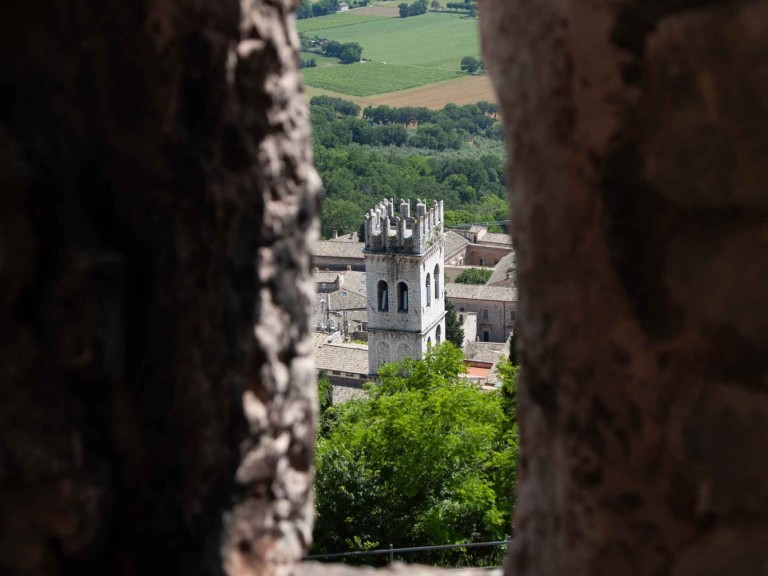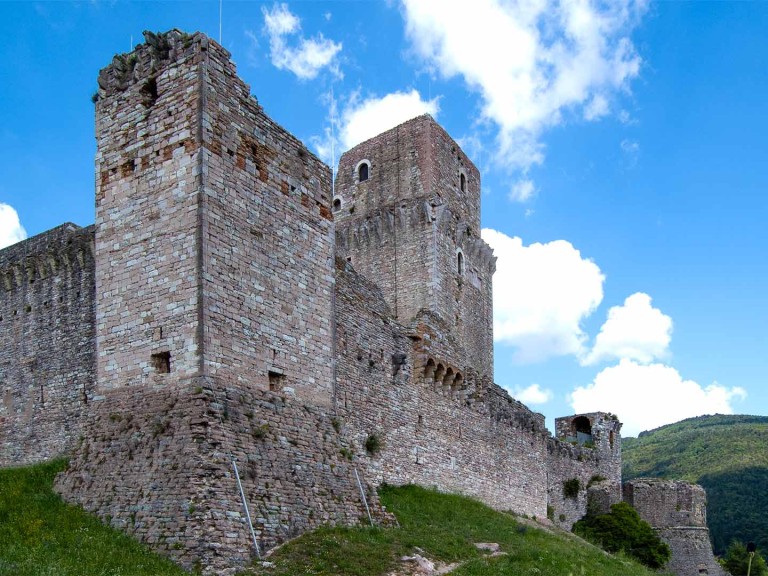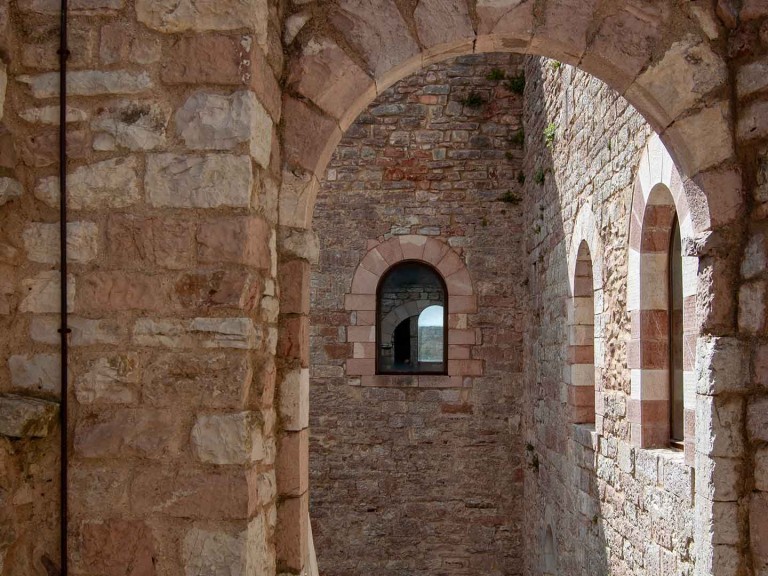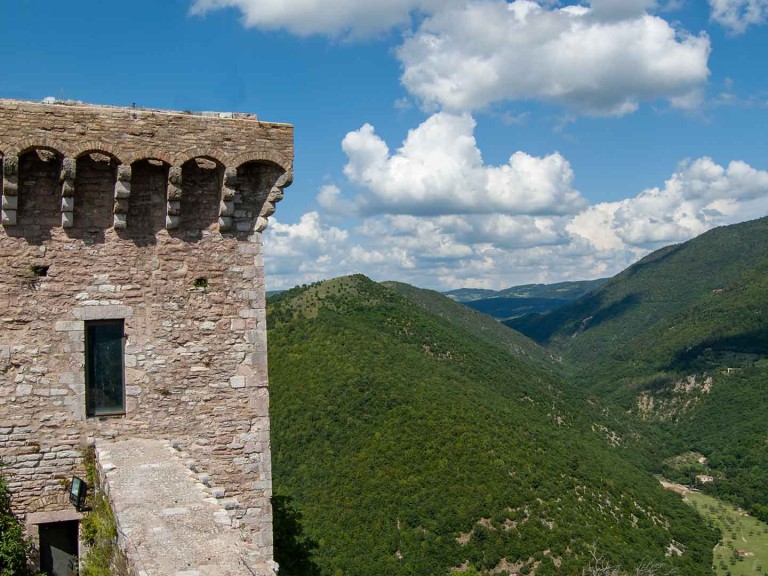Built on the highest point of Assisi, the Rocca Maggiore stands out on the Asio hill that overlooks the city.
“The Castle is a splendid example of ruin, perched on the top of the mountain to whose sides Assisi seems to cling, while it stretches out two arms of stone to enclose the small city in its embrace”.
Built on the highest point of Assisi, already the site of the first settlement nucleus of the protohistoric age, the Rocca Maggiore can be reached from via Porta Perlici and stands out on the Asio hill that overlooks the city.
The first historical news of the fortress dates back to 1174 when the archbishop of Mainz stayed there, who occupied Assisi on behalf of Frederick Barbarossa.
From that moment, the fortress was the seat of German feudal power until Pope Innocent III expelled the Duke of Spoleto and with him the little Frederick II of Swabia, who had been baptized in Assisi in 1197, at the age of three. In 1198 the fortress was destroyed by a popular uprising.
Reconquered by the Papal State, it was rebuilt by Cardinal Egidio Albornoz in 1362.
In the centuries that followed, this splendid fortress became the symbol of the power of the factions that fought over the city, undergoing various renovations, such as that of Paul III Farnese who, in 1535, built the mighty circular bastion, on which the papal coat of arms still stands out today. During the sixteenth century, the imposing fortification lost its defensive function and became the residence of the castellans responsible for controlling the territory.
Later, until the unification of Italy, it was used as a prison, and then became a simple warehouse.
The entrance to the Rocca, now completely restored, opens near the sixteenth-century bastion.
Inside there is a large brick-paved courtyard dating back to the fourteenth century, onto which the service rooms opened.
Adjacent to the courtyard stands the Maschio, once the residence of the castellan, divided into five overlapping rooms and joined together by a spiral staircase. From the top of the Maschio you can enjoy an extraordinary view of the city and the valley, from Perugia to Spoleto. The eye is lost in a boundless space that extends between the fertile sweetness of the plain and the rugged gorge of the Tescio river, revealing a breathtaking panorama.
